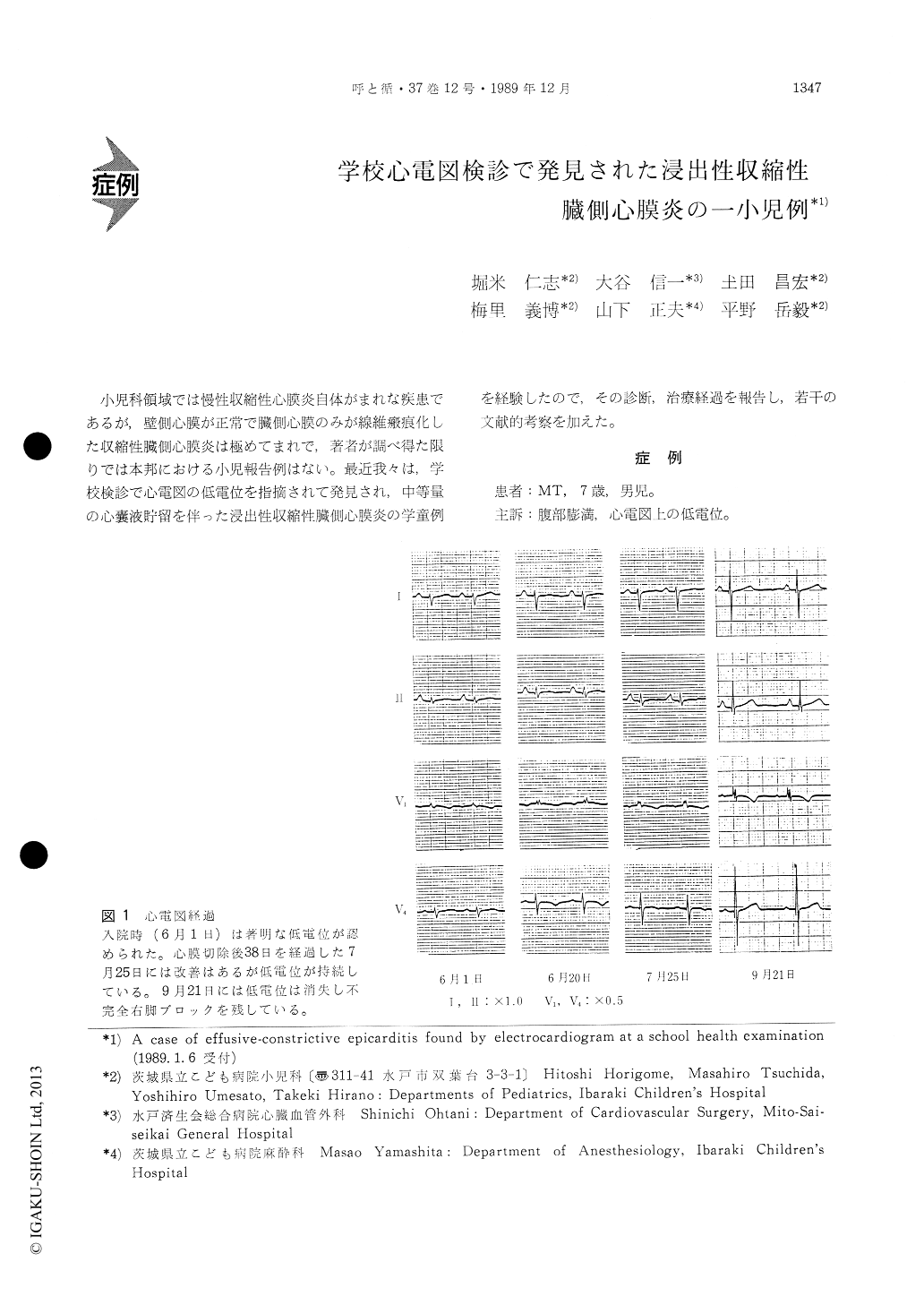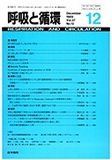Japanese
English
- 有料閲覧
- Abstract 文献概要
- 1ページ目 Look Inside
小児科領域では慢性収縮性心膜炎自体がまれな疾患であるが,壁側心膜が正常で臓側心膜のみが線維療痕化した収縮性臓側心膜炎は極めてまれで,著者が調べ得た限りでは本邦における小児報告例はない。最近我々は,学校検診で心電図の低電位を指摘されて発見され,中等量の心嚢液貯留を伴った浸出性収縮性臓側心膜炎の学童例を経験したので,その診断,治療経過を報告し,若干の文献的考察を加えた。
An effusive-constrictive pericarditis confined to the epicardium is extremely rare in childhood. We report case of a 7-year-old boy with such a condi-tion. During an annual school health examination, he was found to have low voltage activities on electrocardiogram. On admission, physical examina-tion showed markedly distended abdomen due to ascites and hepatomegaly. Two-dimensional echo-cardiography revealed small ventricular cavities, extremely dilated inferior vena-cava, and a moderate amount of pericardial fluids. Pericardial and epicar-dial thickening were also suspected. Retrospectively, epicardial thickening was suspected on computed tomogram as well. Cardiac catheterization showed a typical diastolic dip and plateau pattern on the right ventricular pressure tracing, and deep x and y descents on that of the right atrium, suggesting that not pericardial effusion, but pericardial thick-ening mainly contributed to the cardiac dysfunction. Pericardiocentesis did not improve the clinical symptoms and high central venous pressure. On thoracotomy, we unexpectedly found intact pericar-dium and fibrotic epicardium covering the whole heart, so epicardiectomy was performed. Despite the fact that most of the fibrotic epicardium was removed, there were no immediate responses such as decrease in central venous pressure within the first 5 days after the surgery. Furthermore, it was not until two months later that all symptoms and hemodynamic parameters returned to normal levels.
There have been several case reports of isolated epicardial constriction associated with pericardial ef-fusion in English literature. However, we are una-ware of such a report in Japanese. We concluded that it is important to evaluate the hemodynamics before and after pericardiocentesis, and to detect peri-and/or epicardial thickning by serial echocardio-graphy and CTscan. We should also keep in mind the possibility of delayed improvements after epi-cardiectomy, and early additional invasive maneuver should be avoided in such with "epicarditis" patients.

Copyright © 1989, Igaku-Shoin Ltd. All rights reserved.


